Baia Sprie, known in Hungarian as Felsőbánya (felső=upper + bánya=mine) and in German as Mittelstadt (middle town, coming from the Latin name Mons Medius meaning the same thing), was known as one of the most important mining towns in northern Romania (mainly gold and silver, but also rare mineral complexes, some of them being discovered here for the first time – mentioning here the felsőbányaite among others). First mentioned in 1329 as “the town in the middle of the mountain” (civitas in medio monte), it was always an intersection between several ethnicities (mainly Hungarians, but also Romanians, Germans, Slovaks and Jews) and several beliefs (Catholicism, Calvinism, Judaism, and later Orthodoxy). Part of the Kingdom of Hungary and then Austria-Hungary, it belongs now to the Maramureș Region of Romania (Transylvania). The recent trip I am going to share below was an opportunity to meditate on destruction and decay – as it always happens when visiting Romania – something that is also on going, sadly, in Western Europe as well. The images do speak for themselves, but I will add, as usual, my own comments…

The view from the newest part of the town and coming from Baia Mare, with the towers of the Reformed Church (to the left) and the Catholic Church (to the right). The town lies among forest-covered mountains (also sleeping volcanoes). The big building to the right is the ancient hospital, now a ruin due to political and administrative indifference (the town no longer has a functioning hospital now).

The weird wooden Statue of the Miner in front of the ancient hospital, dedicated to the miners of Baia Sprie. There are also 4 heads coming from the ground.

Another perspective. The park is not looked after and the entire place is Gypsy-infested, which created a certain uneasiness when visiting, as there were several pairs of eyes looking at me and evaluating both my apparent wealth and my physical fitness…

The main park of the city, with the two main churches and a rather ugly monument whose aim I cannot understand, probably dedicated to some heroes (as there is some sort of grave next to it).

The Catholic Church “Saint Mary” of Baia Sprie (Nagyboldogasszony-templom), built in 1846. It is a large church compared to the size of the community (14.329 inhabitants in the 2021 census). The cross between the two towers is bent downwards, something that angered me, as it’s the first time I see such an indolence. Perhaps the Catholic Church or the mayor are waiting for it to come down by itself, something that is to be expected judging by the way it stands.
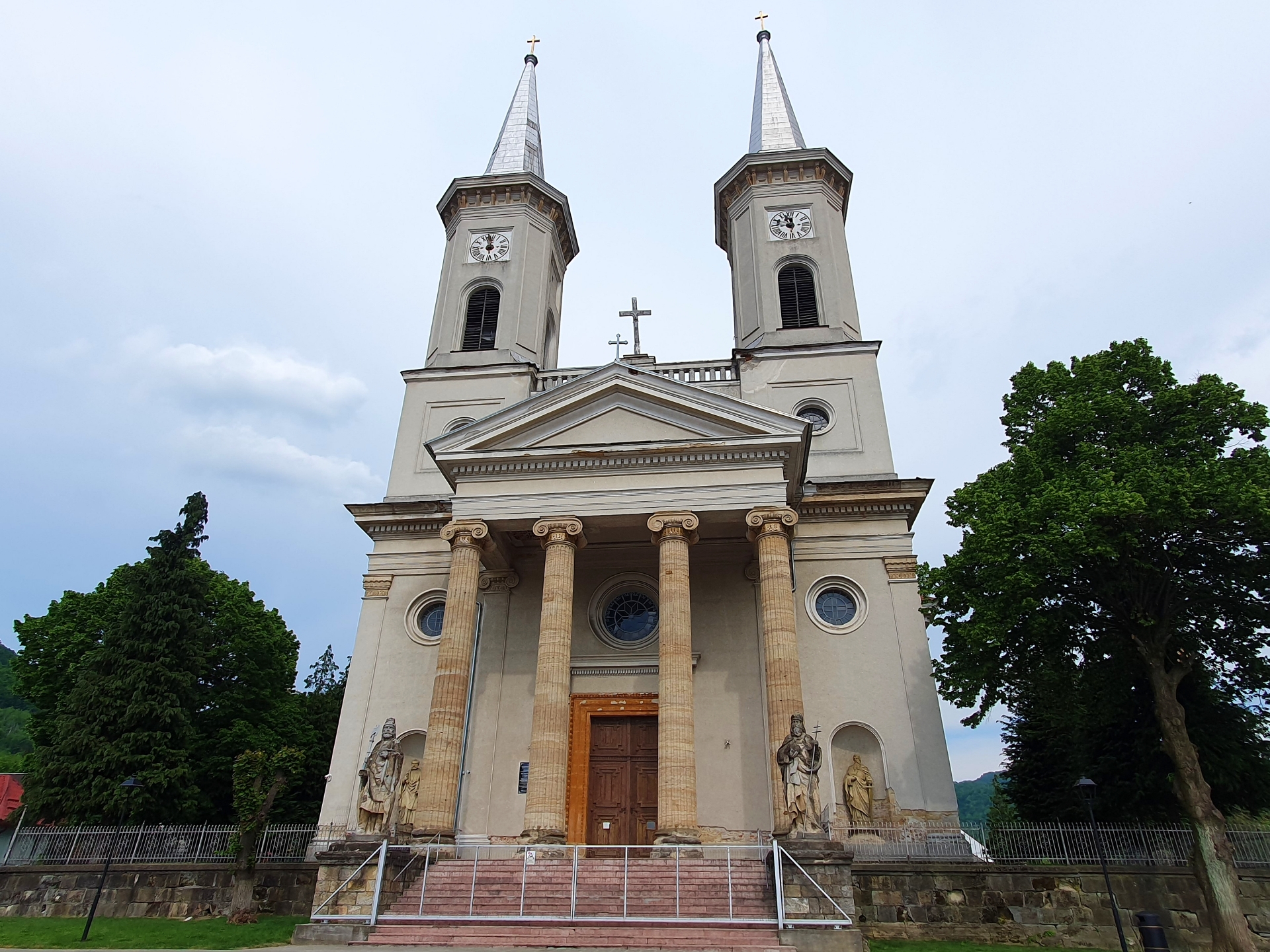
The church was surrounded by metal fences and it was impossible to visit. Some donations might have come handy, but when you are closed… people don’t have the opportunity to enjoy the interior and contribute if they wish to do so…
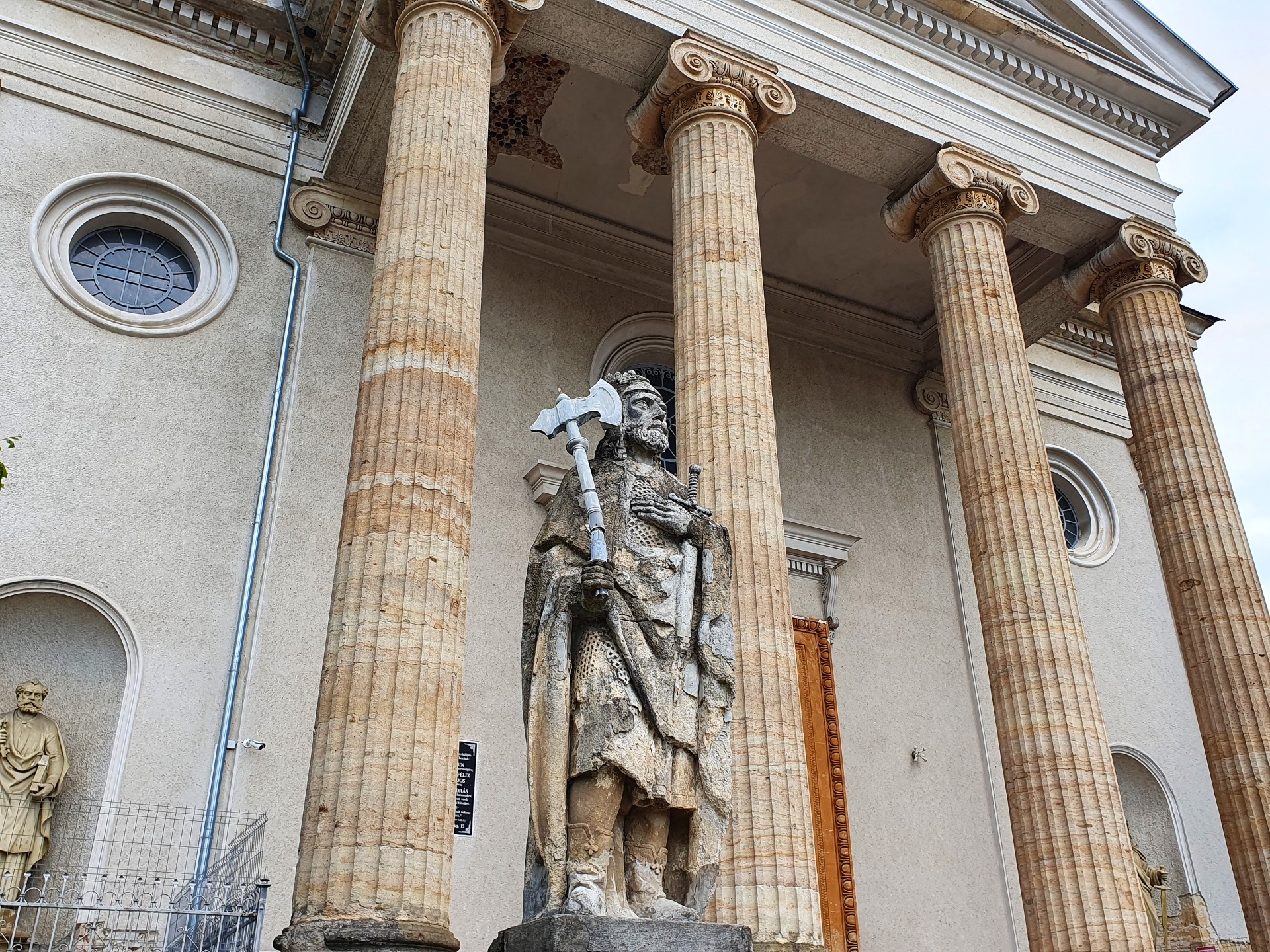
There are two large statues at the entrance, in an advanced stage of decay. They represent Saint Stephen and Saint Ladislau.

This is how people lose their history, architecture and… themselves.
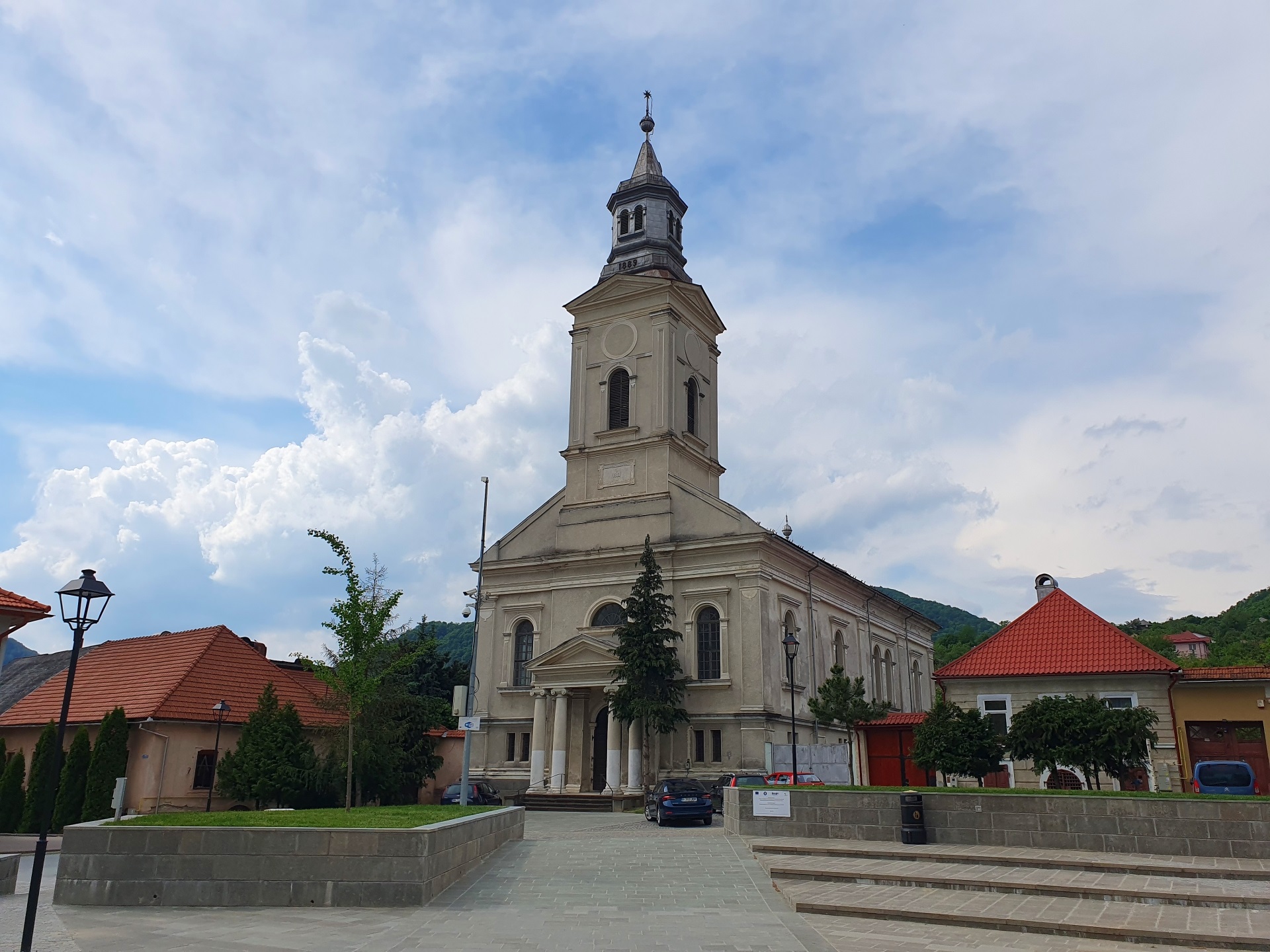
The Reformed Church of Baia Sprie (Felsőbányai Református Templom), built in 1888. It’s a typical Transylvanian church and nothing more.
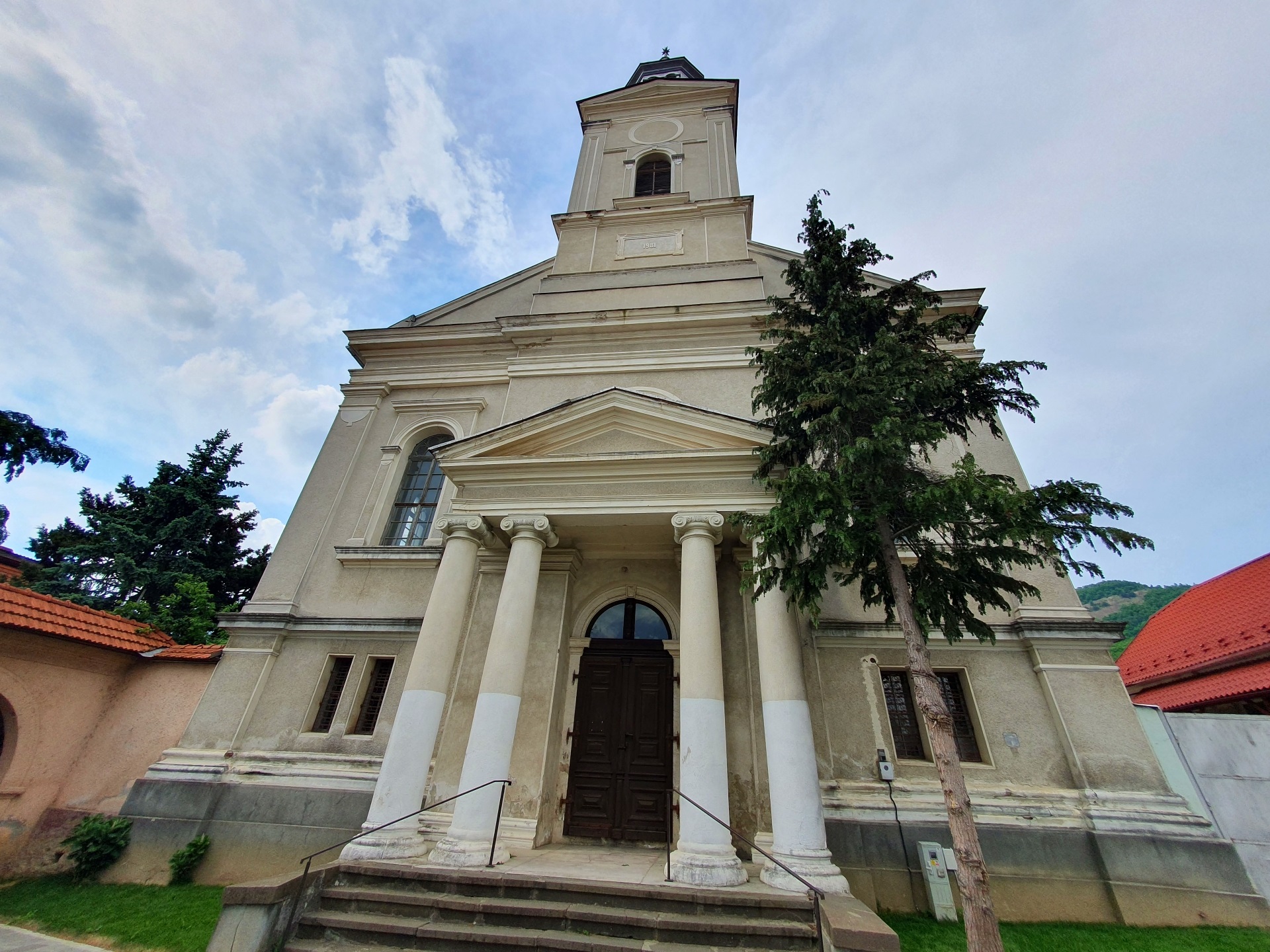
And here is a detail of the entrance. Surprisingly, it was open, but the people were praying inside so I respected their privacy.

Looking back to the main park, we can see the town hall to the left and the towers of the new Orthodox Church somewhere to the right.

Now… I’m not done yet with the Catholic church: here is a view with the church to the left and the Catholic Parish of Our Lady of Felsőbánya (Felsőbányai Nagyboldogasszony Plébania) to the right. In the bottom-right corner of the image you can see parts or rolls of folded grass (bought for making a lawn) thrown away in negligence. The grass has been left like that, unpacked, for weeks in a row, and has started to root and grow according to its best abilities… You must be a particular kind of people and you must be a particular kind of mayor so as to let the grass take roots like that without doing nothing. I was left speechless.
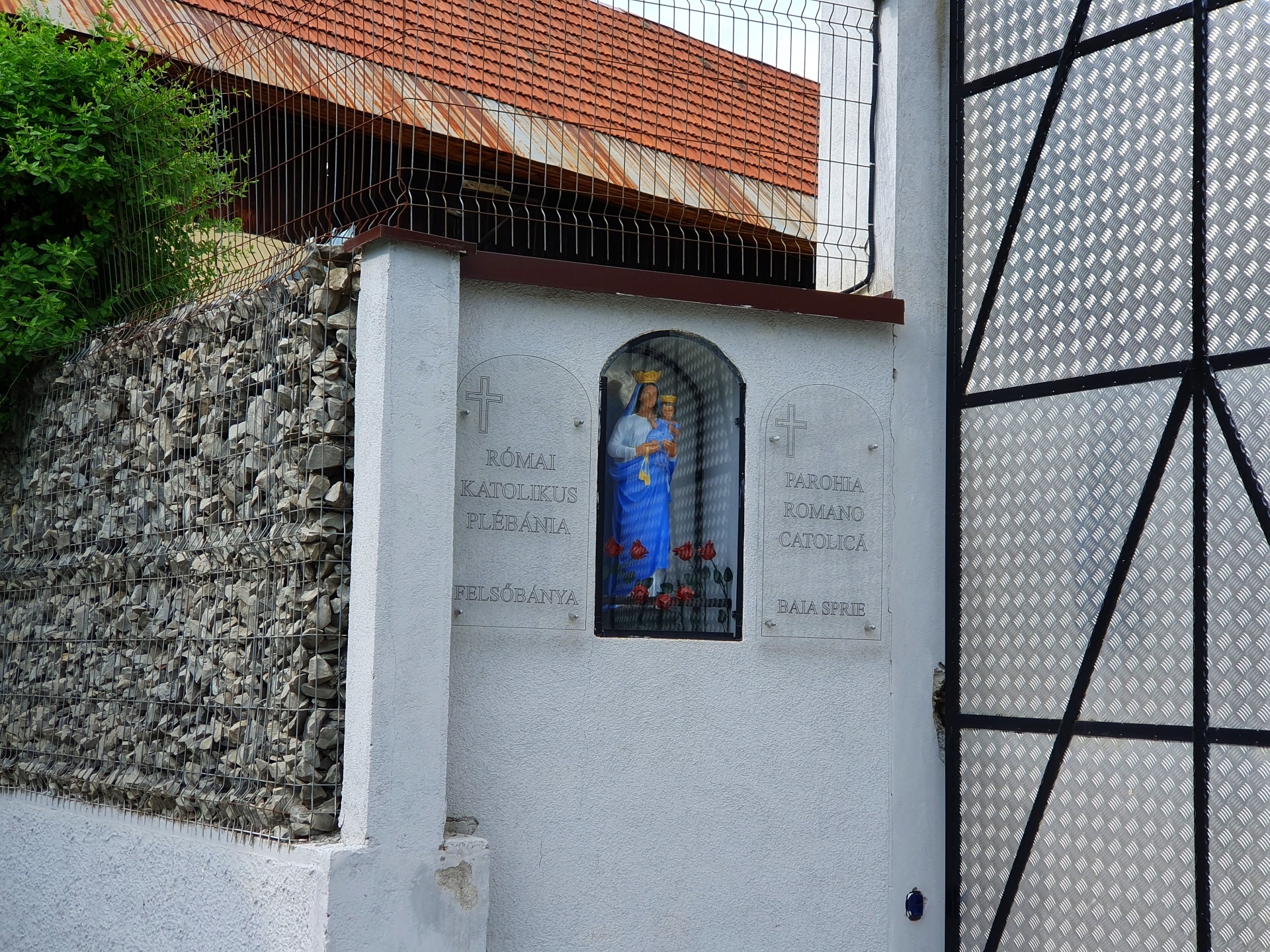
The Roman Catholic Parish is no better: the church is locked, everything is in decay, but they took care of themselves by building a “fashionable” stone-fence and a hideous metallic gate, both of them having nothing to do with the style of the church, of the park, of the entire town or with the common-sense. I mean… Look around you a bit! Keep the same style! Have some taste! You are supposed to be the keeper of that spiritual place, for God’s sake! It’s YOUR church!

Just across the main street, here is the one and only Cultural Center of the town, which is also its public Library. The building is the ancient Korona House, built in 1890 as a restaurant.
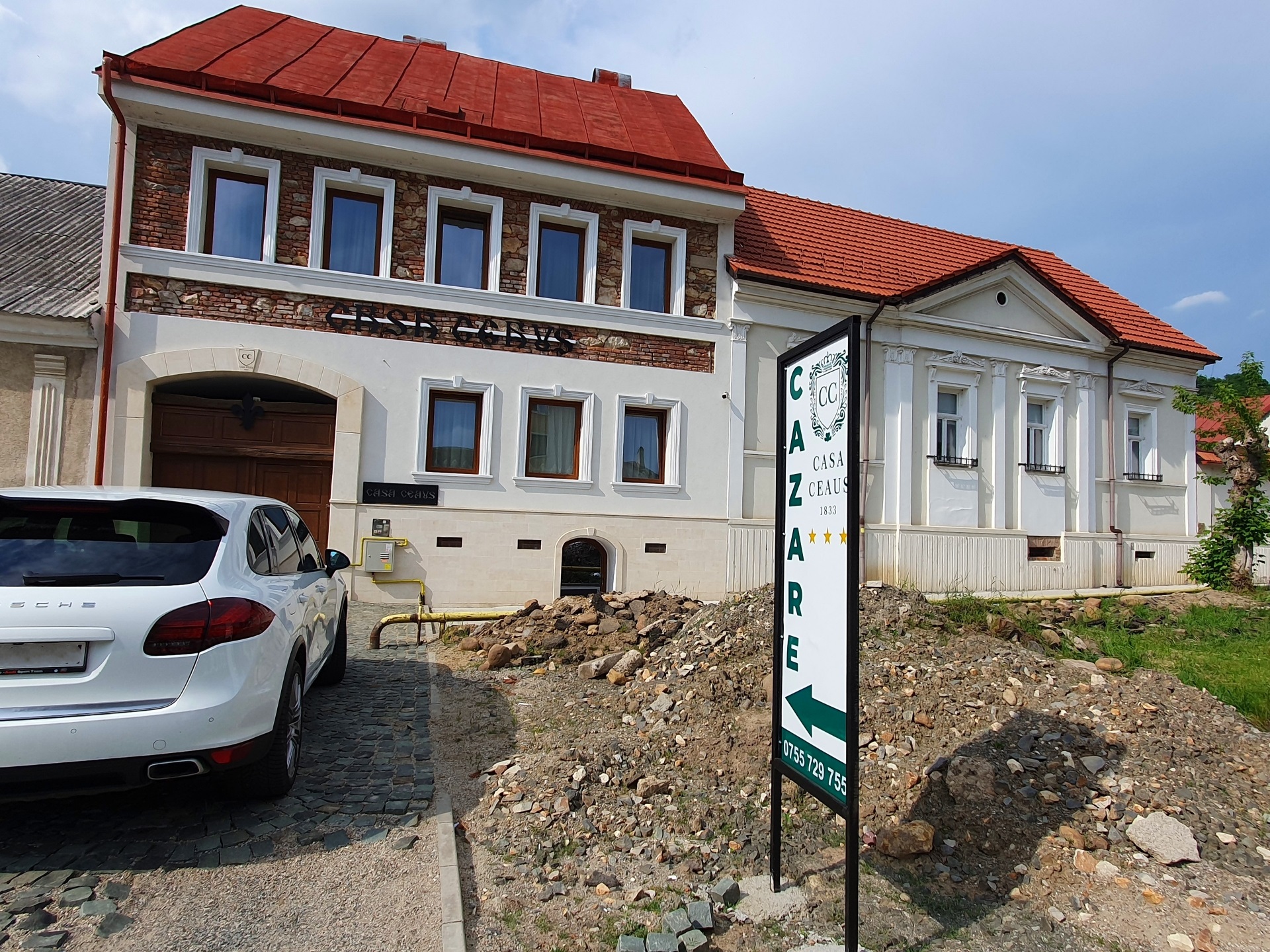
Following the road towards the east, I encountered war-like landscapes. Typical for small nations is the contrast between the personal wealth (you can see a Porsche there in the image) and the poverty of the community as a whole (note the surroundings). The ability to have fun and get relaxed in a world that is literally falling upon you in decay… is something “very Romanian” or “very East-Europe”… sadly. There is no civic sense or any sense belonging to anything really; what matters is the personal gain and nothing more.

Camera turned slightly to the right, along the main road. Enjoy the view, dear tourist!
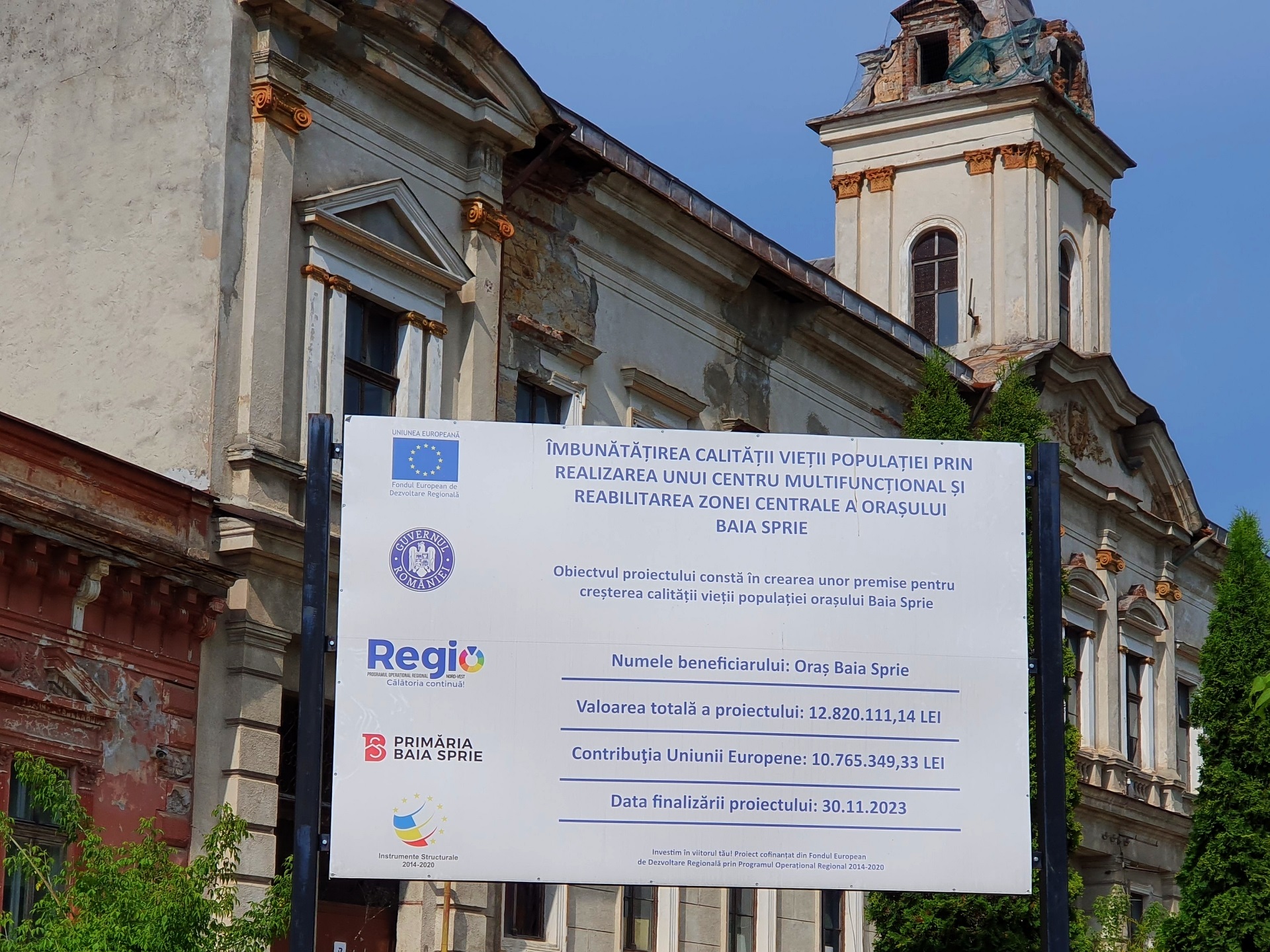
For those inquiring what is all about, this is a project using European Funds, that was supposed to end in November last year (6 months ago). For your delight, I translate the title of the project: “Enhancing the quality of the life of the population though making a multifunctional center and rehabilitating the central zone of Baia Sprie”. The objective (aim) of the project is: “The creation of premises for increasing the quality of life of the population of the town of Baia Sprie”. Grammatically speaking, it is an insane enumeration of words in the genitive case, the mark of a bureaucratical style language that has nothing to do with reality. Is the project finished? No. That’s what matters! Even in an election’s year like 2024, they couldn’t do it. Not even now. The reason is because the election result is already known, so why bother?!
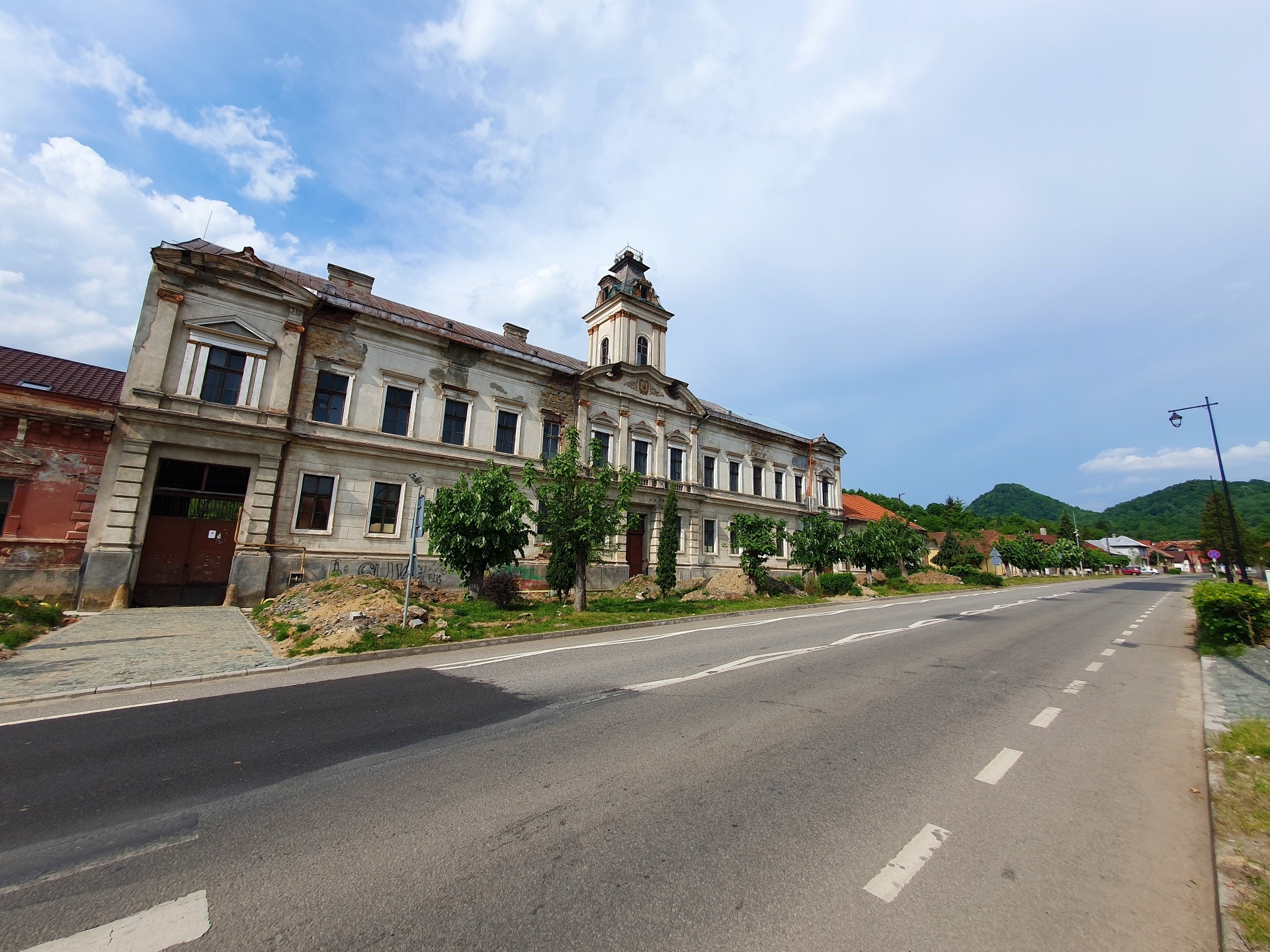
The building behind the “project’s” banner is actually important. It’s the Sisters of Mercy Convent (the Roman Catholic girls’ school or Szatmári Irgalmas nővérek zárdája), built in 1887. It is abandoned now and falling apart. Just imagine that here came people from all corners of Europe so as to study: it used to be an important cultural and teaching center. Not anymore!
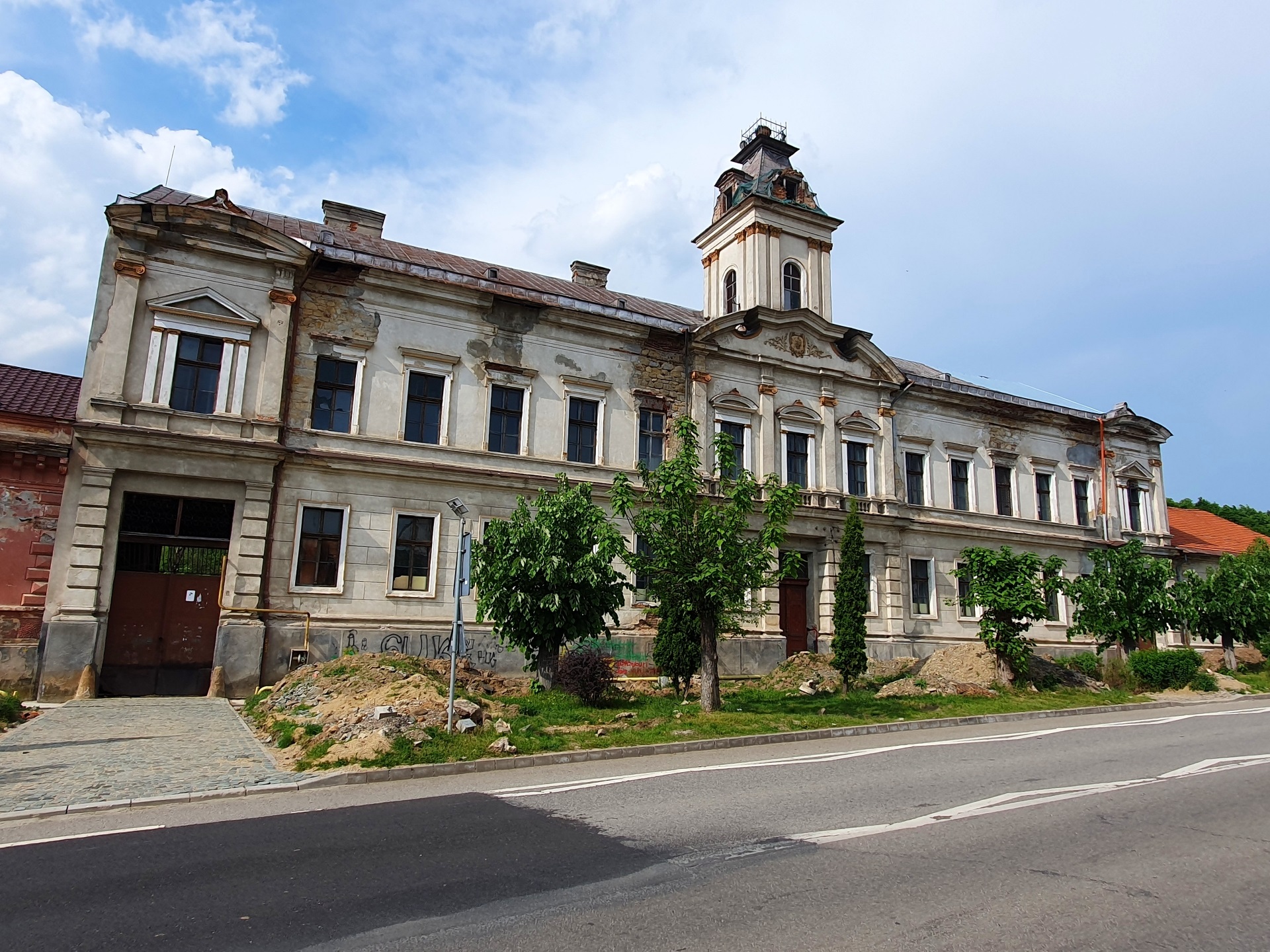
Here is a detail, for the future generations that won’t have the chance to see this building standing (if the future generations still care about their history, which is debatable).
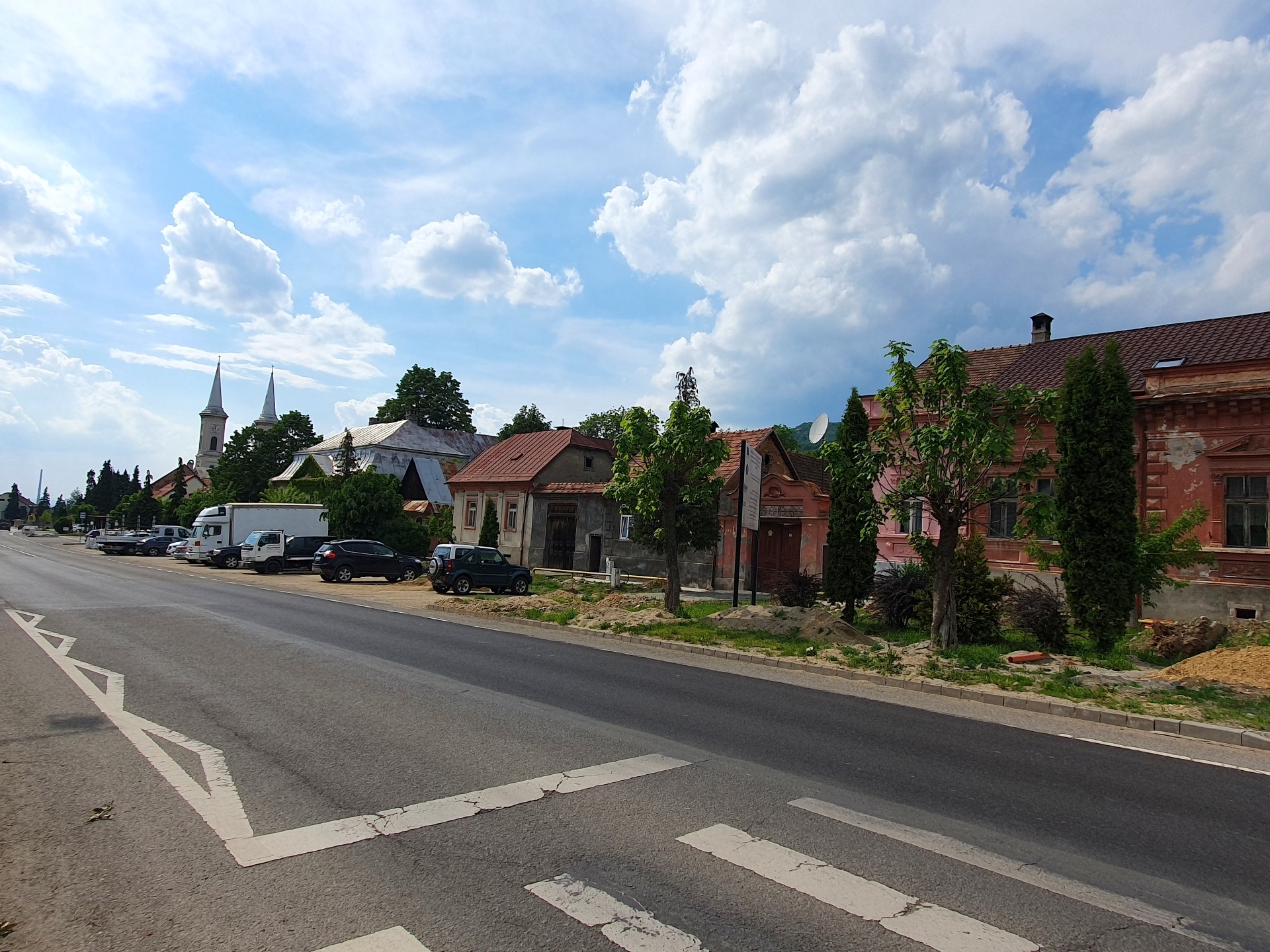
Now, back to the center of the town.

A nice ivy-covered building, also touched by decay. But the cars in front of it are new… This is actually the Sztancsek House, built in 1790, one of the few historically important buildings in town.
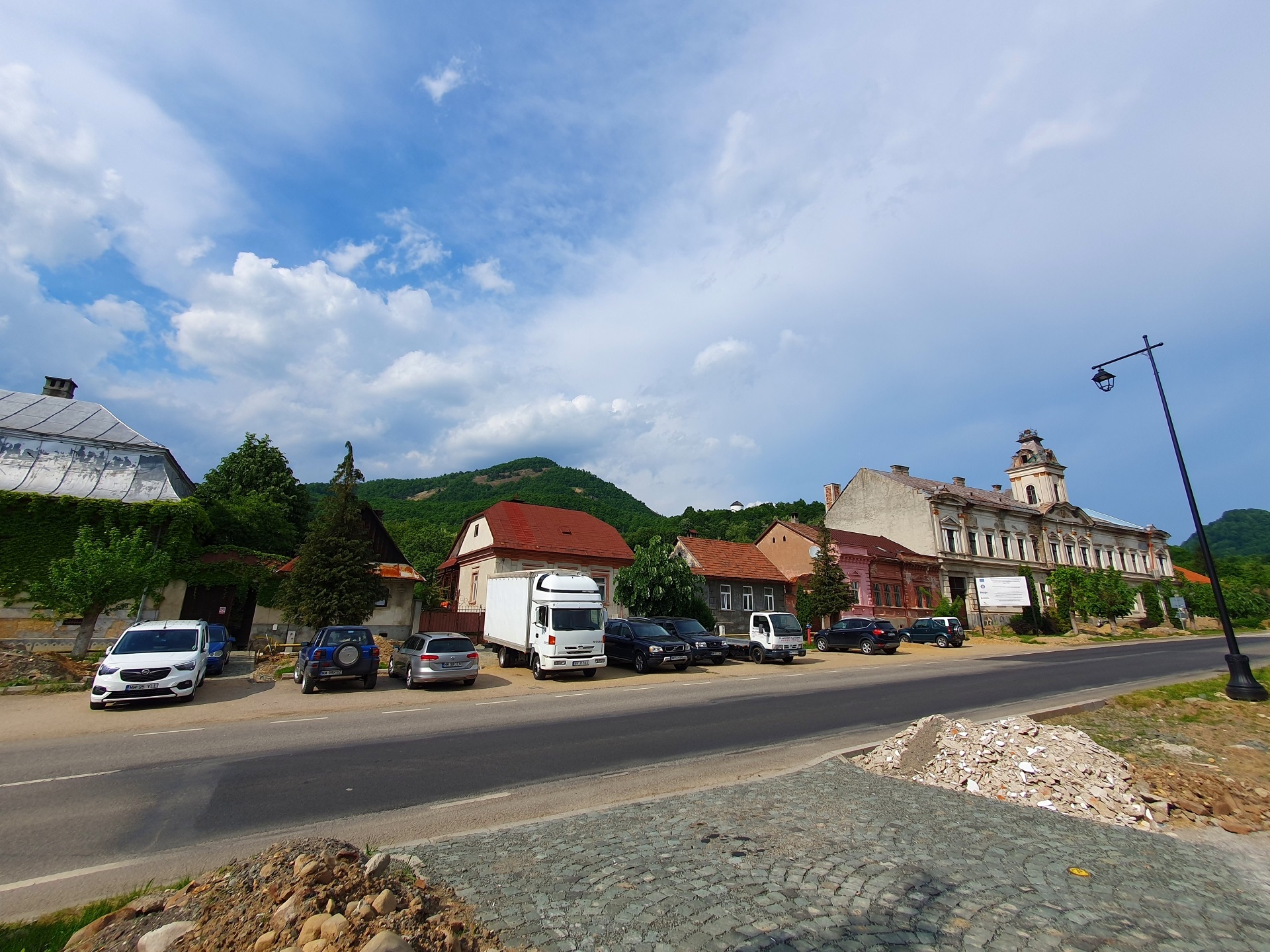
Another view…
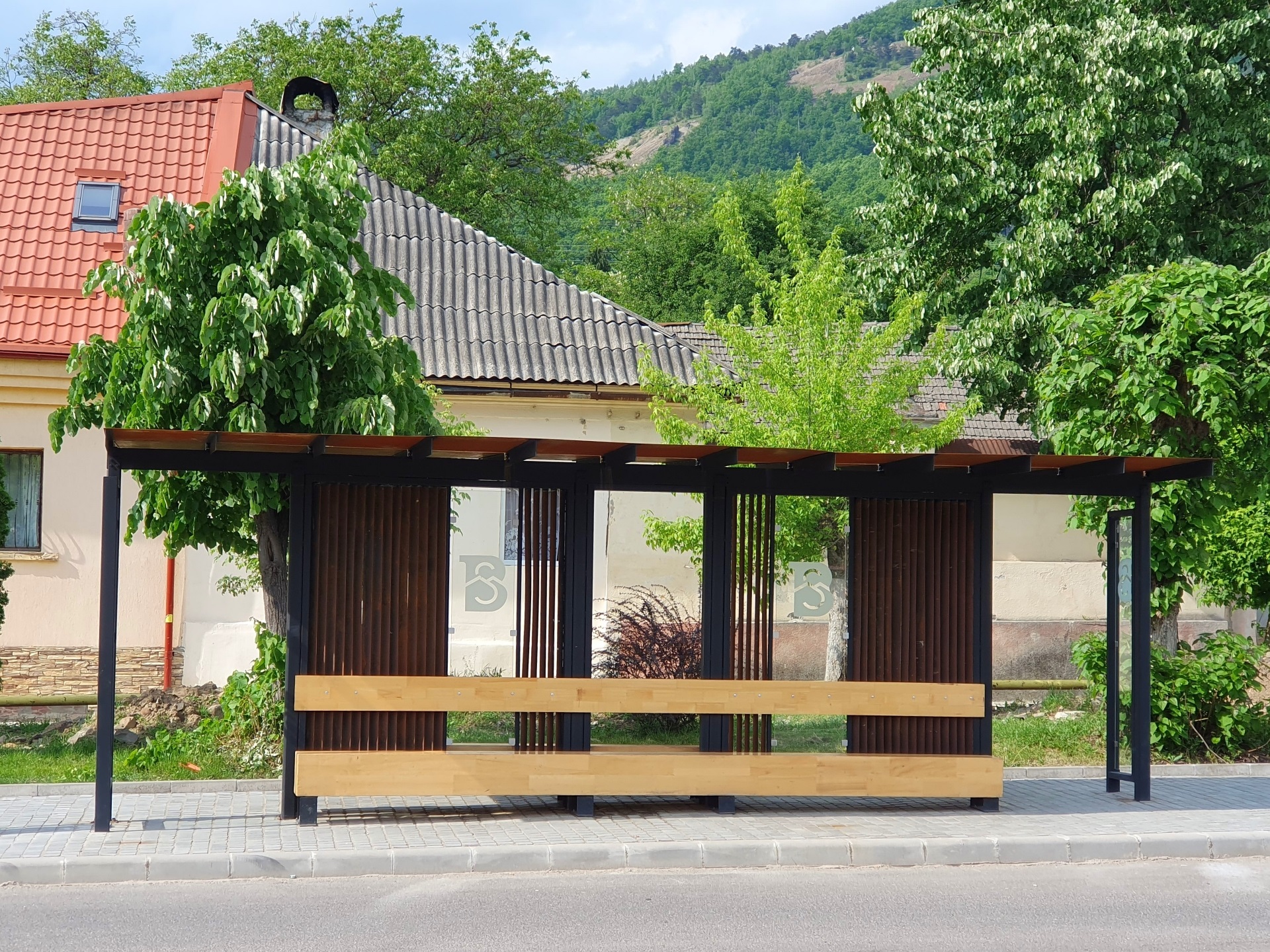
The irony of the situation is that the town got for itself new, modern bus stations. They are simpler to build. Just what the town needed! Bus stations! In a dead place! Smart town, right?!

Near the Cultural Center.

The Catholic Church seen from one side. There is a colorful statue in front of the church, the Fountain Stoll.

I fail to see who had the “smart” idea to paint this statue in the colors of the rainbow, when the statue should respect the style of the place and remain golden (the way I understand it was in the past). This is simply kitsch and nothing more.

Next to it, the “Old Age” Statue (Statuia “Bătrânețe”, in Romanian). The two styles obviously don’t mix well. They do not mix well with the church as well. And the many black trash cans scattered around don’t mix with anything…
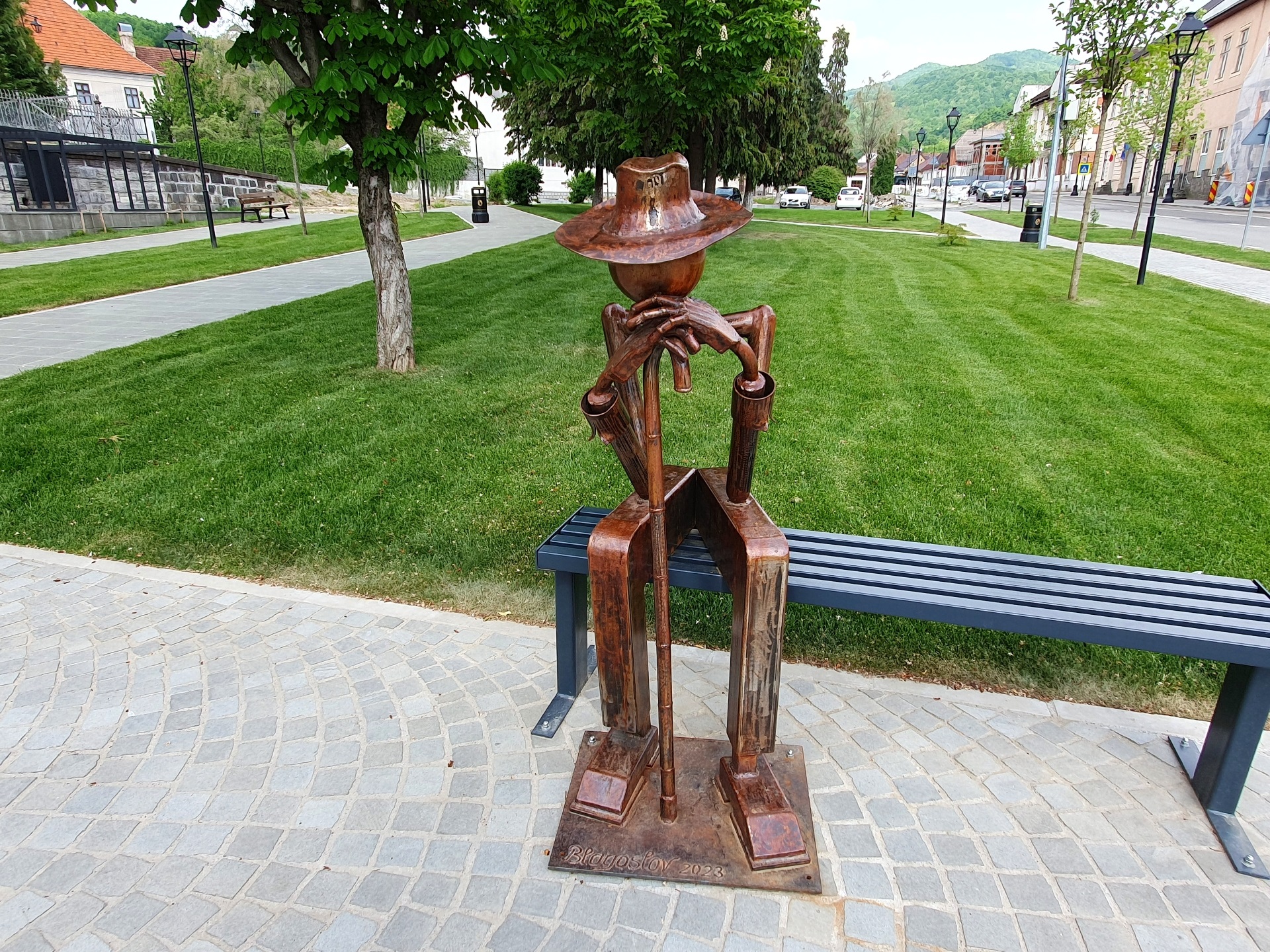
Yes… Baia Sprie has no style… This is what the Old Man seems to say… Also, the “days of glory” lie in the past…

Looking back across the street, here is the Town Hall (Városháza), built in 1739.
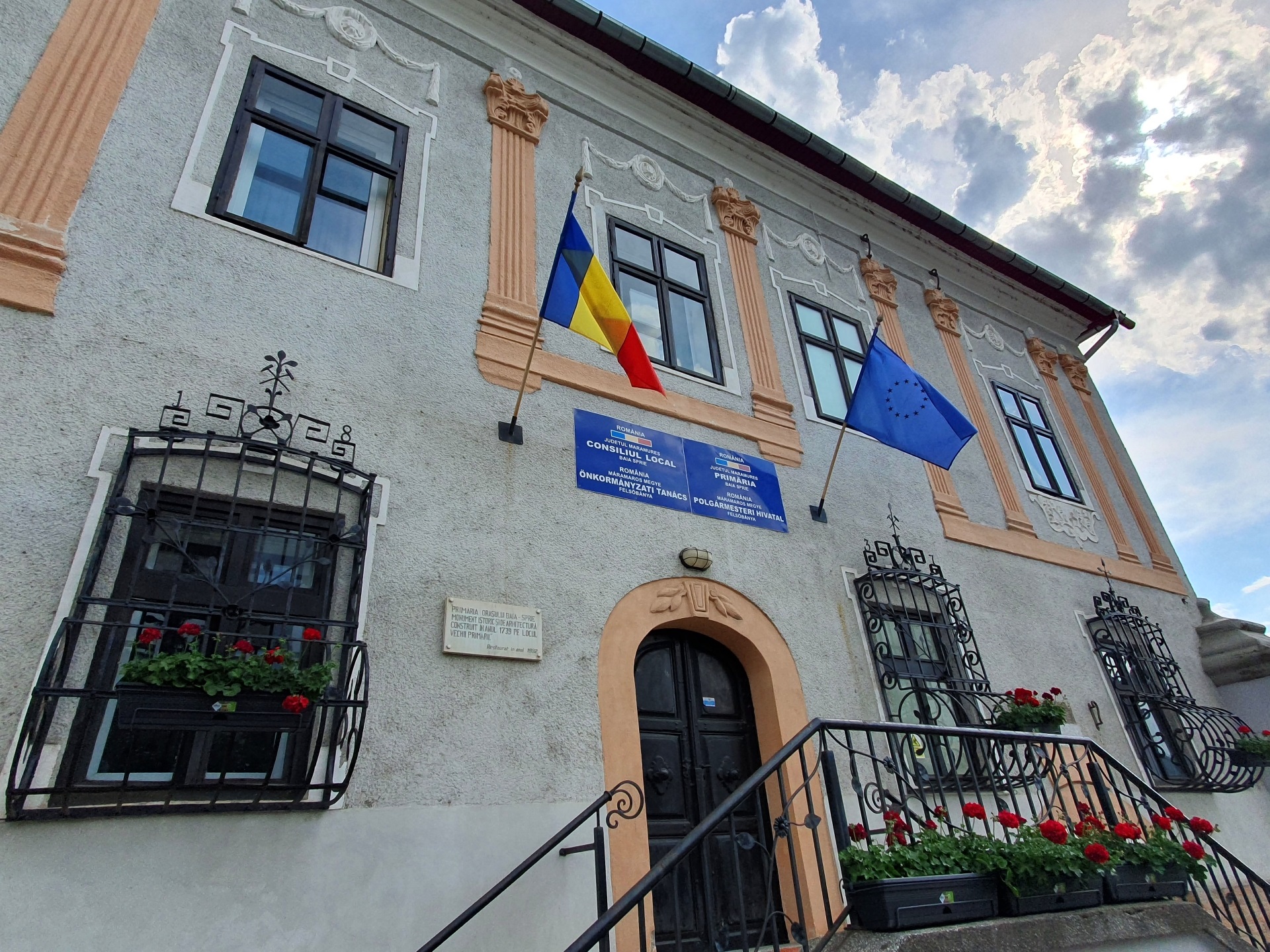
A detail of the façade. The same building also hosts the local Town Council.
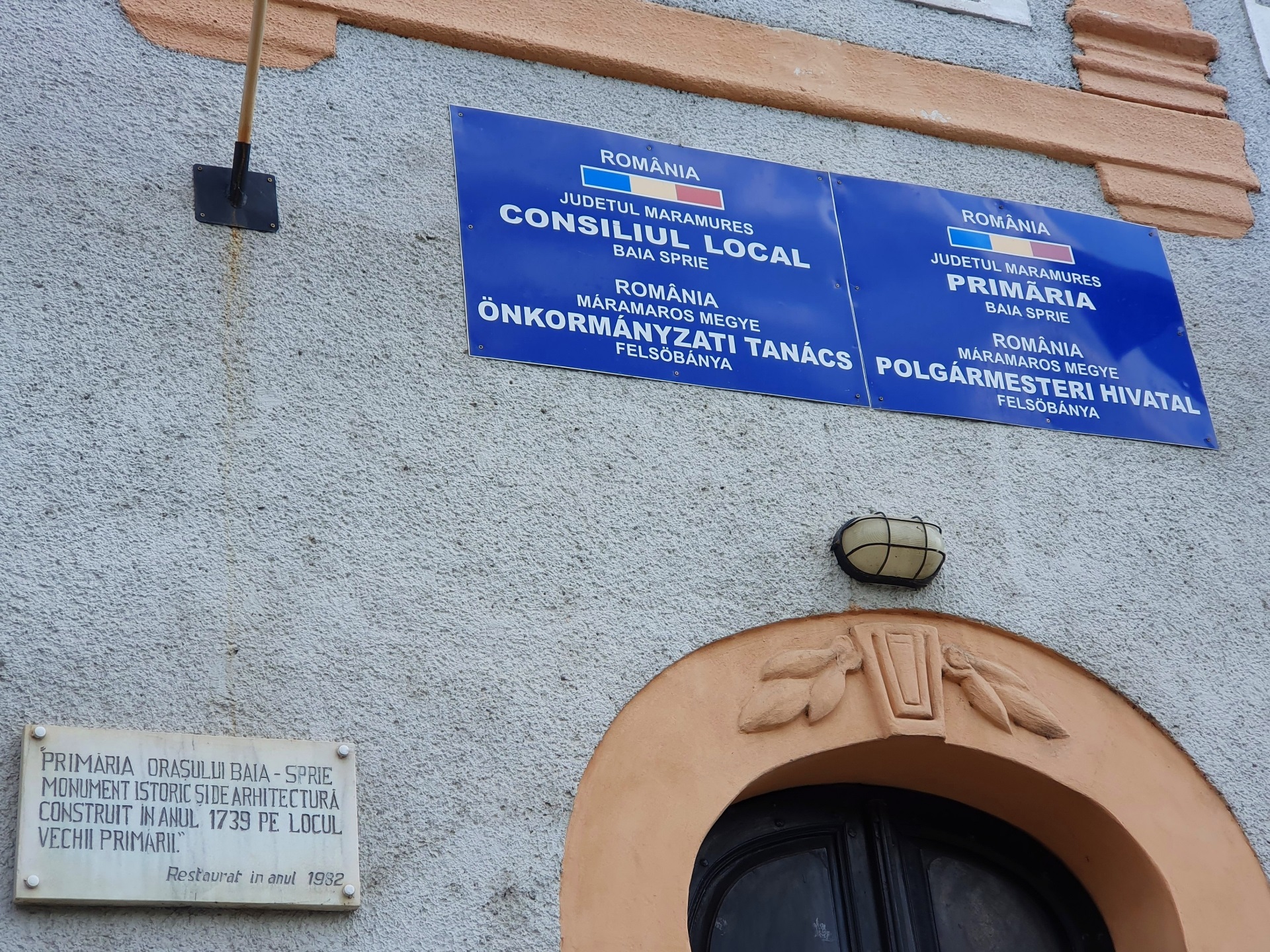
Baia Sprie is known as having a Hungarian majority, which has only recently receded in favor of Romanians. For this reason, the signs on the Town Hall wall are bilingual.
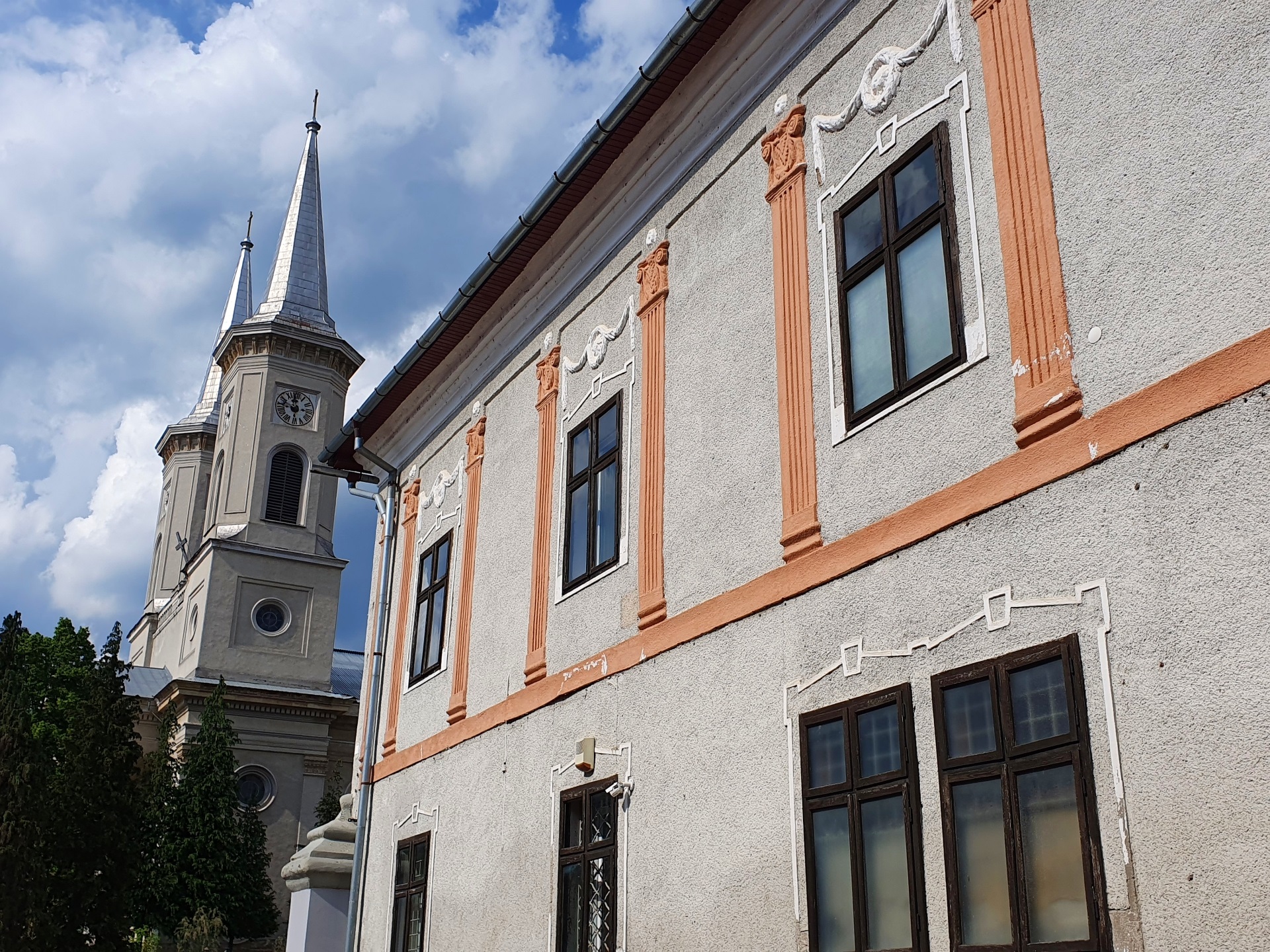
A (rather artistic) view of the Catholic Cathedral from next to the Town Hall.
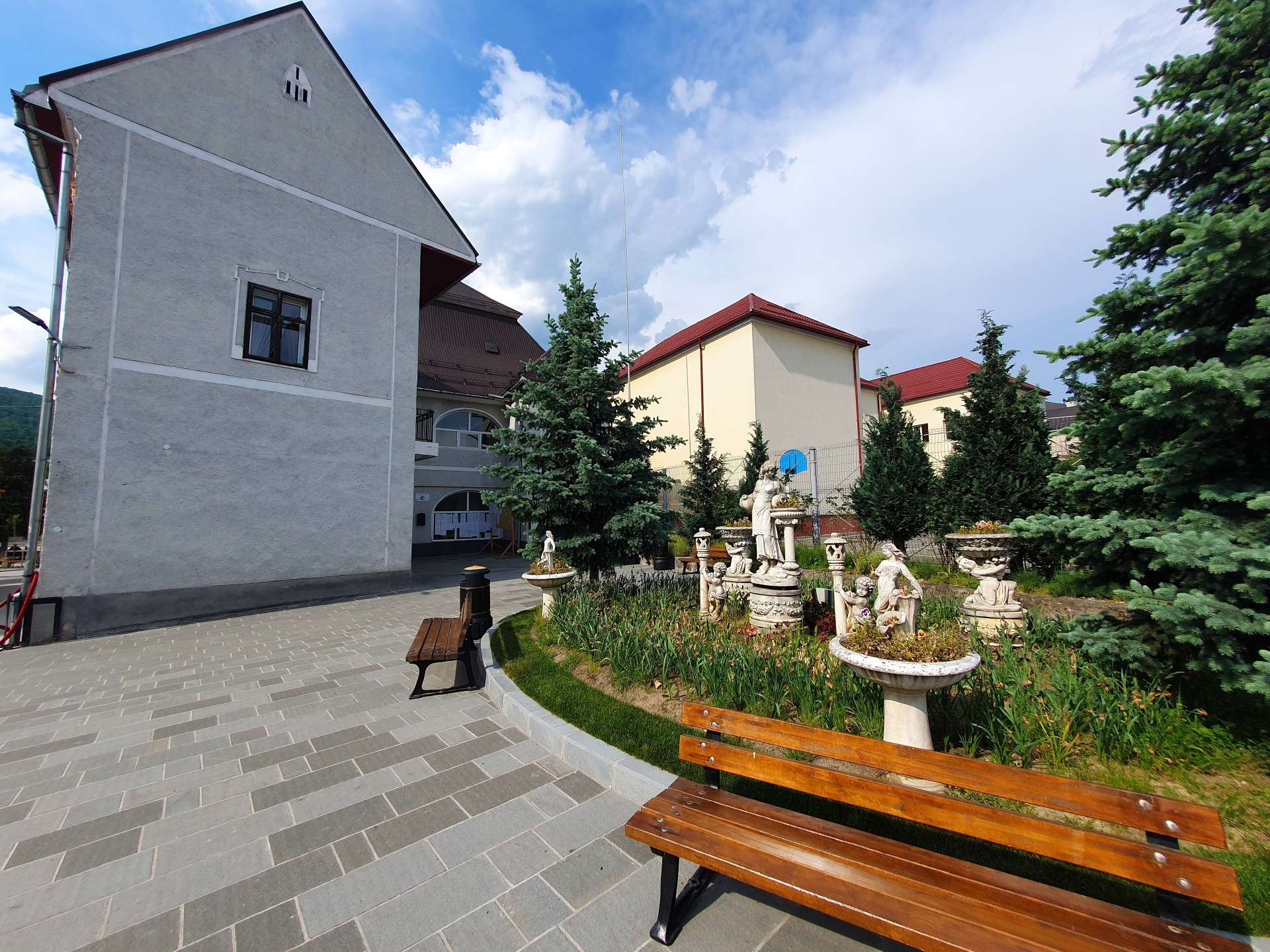
Behind the Town Hall and between it and the Market, there is this… I don’t know… park with a group of statues. I don’t see the connection between these sculptures and the rest of the buildings around, which have a completely different style… But apparently, more (and many) is (equals) better!
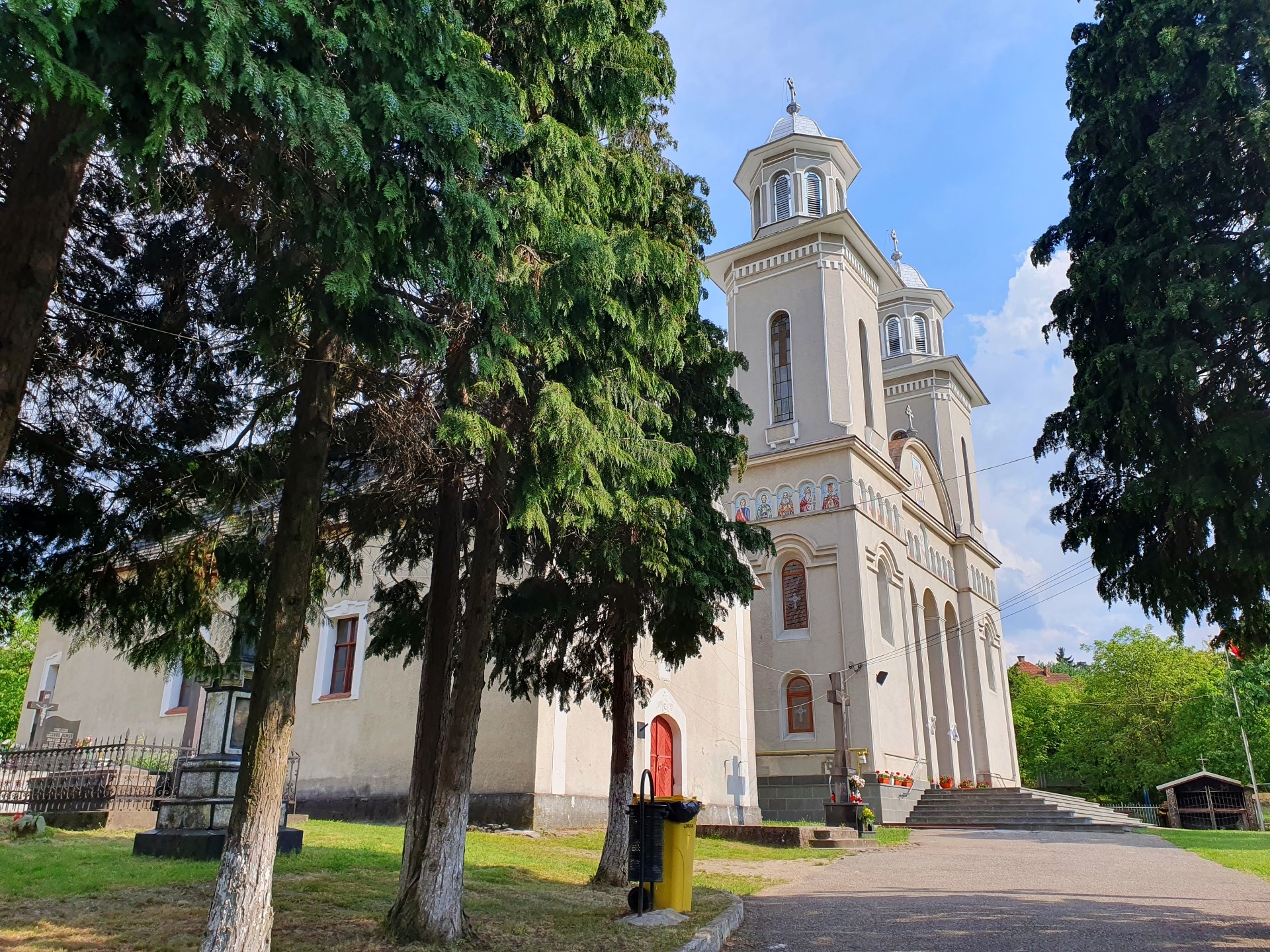
A view of the Orthodox Church (which is the smaller one, hidden by the trees – I had no idea what is the most important sight and I thought it’s the bigger and newer church). Initially a Greek-Catholic church, it was built in 1793. From the garden you can see a nice view of the mountain on the other side of the town, with the white Calvaria Chapel, built in 1848, visible in the upper-center part of the photo.
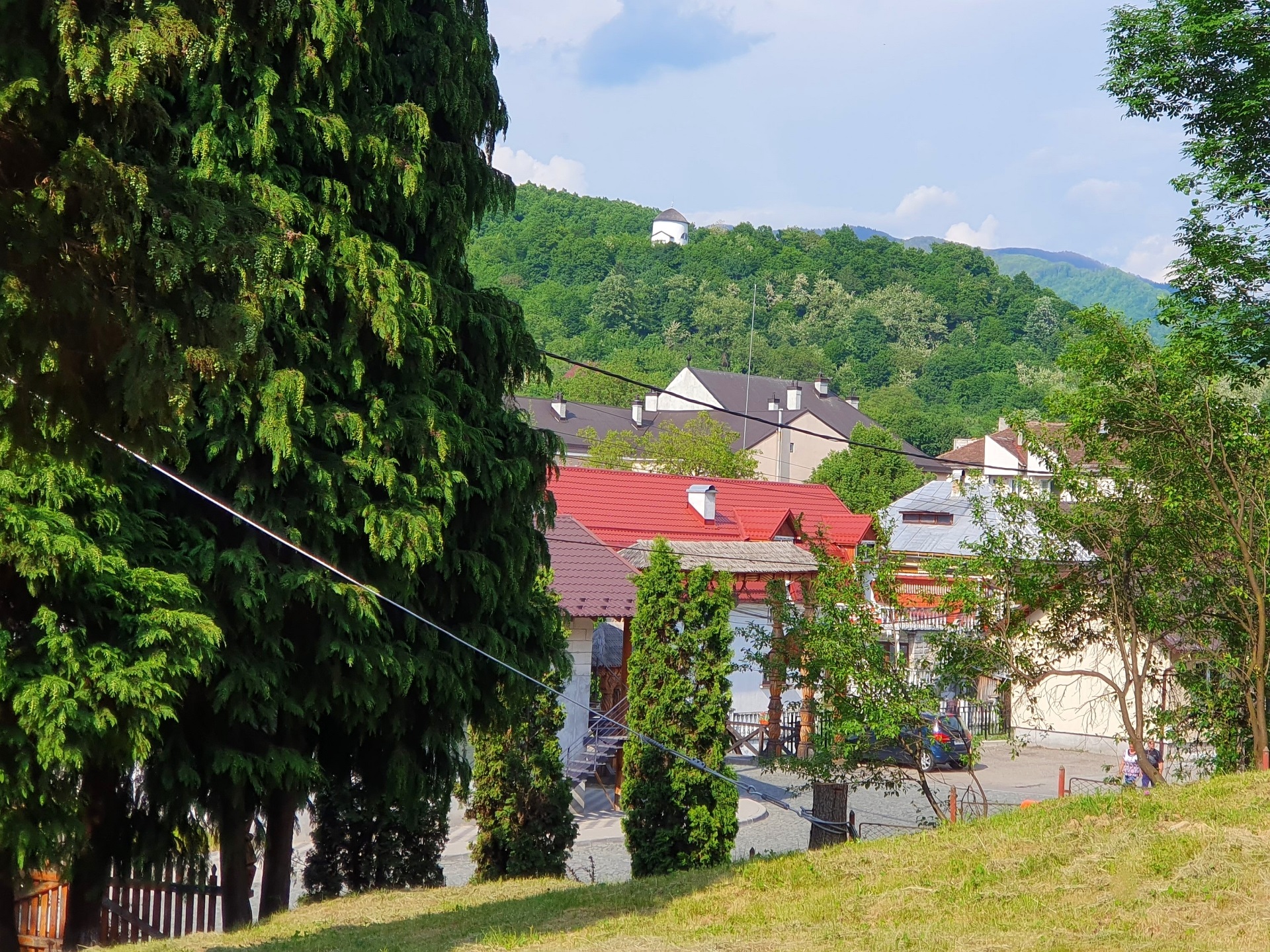
And here we conclude our journey through Baia Sprie. Feel free to visit my main article about Baia Mare (Rivulus Dominarum) which is the capital of Maramureș County and is found 9 kilometers to the west. Thanks for following me!
Mons Medius


